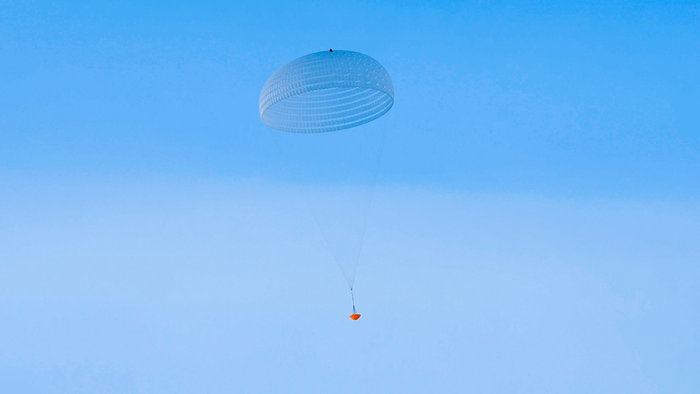- Geology, so Mars stopped resembling Earth
- Exploration: the challenge of reaching the red planet
The European space mission ExoMars2018 became ExoMars2020 and now, the failures in the latest tests with the parachute threaten to have to rename it as ExoMars2022. This has been recognized by this newspaper the European Space Agency (ESA) that, together with the Russian agency, Roscosmos, has been working for years in the development of a sophisticated robotic vehicle ( rover ) that will look for signs of past and present life Mars with a drill that, for the first time, will allow you to obtain samples of your soil up to two meters deep.
The plan is to launch the rover (baptized with the name of Rosalind Franklin in tribute to this English scientist) and a scientific ground platform (Kazachov) between July 25 and August 13, 2020 from the Russian Baikonur Cosmodrome to reach Mars in March 2021 .
The first test of the descent system was carried out successfully last year using a helicopter, which correctly deployed the main parachute, 35 meters in diameter, at an altitude of 1.2 kilometers. On May 28, the sequence was tested for the first time with the four parachutes at an altitude of 29 kilometers, being launched this time from a helium balloon. Although the parachute mechanisms were activated correctly and the sequence was completed, the components suffered some damage, according to ESA
After conducting an inspection and making changes to the design, another test was carried out on August 5, this time focusing again on the main parachute, which is the largest to be sent to Mars. Again the first phases of the descent went well but there was a failure in the final part.
" In case of another failure in the parachute tests there would be no opportunity to qualify the system in time . As the main priority of ESA is that the mission be a success, the launch in July 2020 would not be viable," they point out to EL MUNDO François Spoto, head of the ExoMars team, and Nico Dettmann, head of the ESA project development group.
In the event that the mission is postponed, they add through an email, "a subsequent launch would have to be debated and an agreement should be reached among all project members, including countries that are part of ESA and its international partners. "
A mission in two phases
The ExoMars mission, whose estimated cost in the European part increased from 1,300 to 1,500 million euros today, has been conceived in two phases. The first, launched in 2016, consisted in turn of two components: a probe ( Trace Gas Orbiter, TGO ) that was successfully put into the Martian orbit that year and is analyzing trace gases and methane, and a ship test ( Schiaparelli ) that crashed in October 2016 while trying to crush.
With the Schiaparelli module, which had some instruments to do science for a few days, engineers were rehearsing the delicate landing of the expensive rover that would go two years later, in 2018. It did not go well but ESA engineers defended that it was precisely to try the complicated amartizaje, which only NASA has so far successfully completed with its Spirit , Opportunity and Curiosity rovers . The increase in the planned cost threatened to cancel the mission, but finally the ESA countries agreed to continue financing it.
Likewise, the mission was postponed from 2018 to 2020 due to the delay in the development and delivery of scientific components and instruments. In order to shorten the trip and save fuel, missions are launched when Earth and Mars are in the most favorable positions, which happens every 26 months or so. Therefore, any postponement requires waiting a couple of years.
On the other hand, the tests and integration of the Rosalind Franklin rover go as planned, so those responsible for ESA do not rule out that it can be launched on the scheduled date. Everything will depend on the parachute. According to Francois Spoto, there are two other tests of the descent system on the agenda, in November 2019 and 2020: "ESA is confident that it is possible to incorporate more effective improvements in the design in time."
According to the criteria of The Trust Project
Know more- Science and Health
- science
Interview Lewis Dartnell, astrobiologist: "The Earth made man and now it is the other way around"
Science and Health The danger of moisturizers for breast milk
Science Rain of Perseids 2019: When can you see the Tears of San Lorenzo this year?

